





















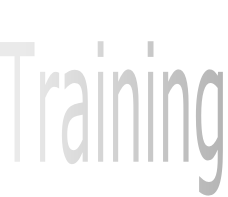
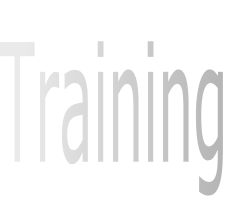
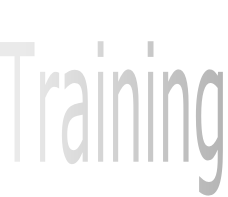
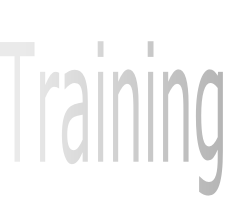
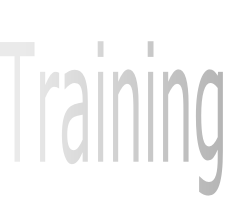
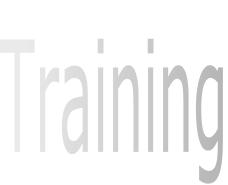
Make sure you have a check list of the equipment required, for example:
- a projector for PowerPoint / video presentation
- A screen
- a table or desk (maybe shared with the projector)
- a flip chart easel and pens (to note comments, highlight key points, provide additional information, answer questions, etc.) or Interactive whiteboard, smartboard, surfboard, ironing board or whatever you are lucky enough to have.
- Video playback system
All the equipment should be positioned at the front of the room and not moved during the presentation. All equipment leads should be taped down or fitted in cable lays for safety - yours in particular. It’s embarrassing, dangerous and expensive to trip over wires during the full flow of your presentation, sending projectors crashing to the floor, scattering burning glass projector lamps and setting fire to the hair and wigs of people sitting on the front row. Spectacular but better avoided.
Test all equipment before the event, cue up the video(s) if necessary, make sure the PowerPoint computer is running mains supply and not battery (batteries have a habit of running out part way through the presentation). If you are in a modern facility, make sure you know how to operate the equipment flawlessly. Don’t just presume it will work - it won’t.
If you are in an ‘old-tech’ situation make sure that there is sufficient flip chart paper and felt tip markers. Blu-tac should also be available if you plan to post completed flip charts around the room (perhaps illustrating key points). If you are working with an old DVD player and monitor check that they work, it’s not uncommon to find that someone has pilfered the plugs for other equipment in an emergency and not replaced them.
All participants should be provided with pen and paper and syndicate groups with materials for feedback.
If appropriate, jugs (or bottles) of water and glasses may be provided.
You may wish to provide tea or coffee on arrival, which can often act as an icebreaker and avoid interruptions from late arrivals.
After studying the participant list, pre-prepare your syndicate groups or teams. Where possible mix them between job roles. If there are three people from one department, consider placing one in each group. Try to evenly mix males and females within teams.
Plan the seating positions and put name cards in position before everyone arrives.
Alternatively, give each participant a card illustrated with one of three or more different symbols as they arrive (e.g. fruits, vehicles, place names). When all are assembled, ask symbol ‘a’ to form one group, ‘b’ another, etc, and when seated, write their own name cards. If the attendees do not know each other, curiosity over the purpose of the symbols can encourage conversation and relieve some of the initial awkward tensions.
When everyone is seated, you should explain the housekeeping rules (as appropriate to your venue and organisation).
Encourage people to ask questions.
Inform them at the outset if they will be expected to complete a Plan for Personal Action, (or if you prefer a short test sheet) at the end of the course.
Next comes your personal introduction - your name, position in the company, department and maybe an interesting feature about yourself that could help put people at ease. Be brief. You could ask each course member to do the same. Or ask them to partner with the person sitting next to them, then interview each other for ten minutes on who they are, one interesting fact about their lives and what the word environment means to them. Ask each to give a short description on their ‘partner’ to the rest of the group. This is important even if the learners know each other - they may learn something new about their colleagues and the inevitable humour that results will help them relax in readiness for the course.
Finally, run through the programme of events, including finishing time
and ask for co-operation in time keeping.
Breaks. Arrange to have a 15 minute break after approximately 1½ - 2 hours, with refreshments (tea or coffee).
Syndicate exercises should have been suitably interspersed during the course and should last approximately 15 - 20 minutes, with 5 - 10 minutes feedback time for each group i.e. a syndicate exercise for three groups will take a maximum of 20 + (3 x 10) = 50 minutes.
Materials for feedback should be provided such as loose flip chart paper and marker pens for each group.
State the time the exercise should end e.g. 10:05 - not how long it will last and give them 5 minute, then 2 minute “warnings”. Maybe suggest that comfort breaks (use of toilets) be taken if necessary during this period.
Encourage questions throughout. Don’t waffle - if you don’t know the answer, say so but offer to follow up any unanswered questions after the course.
End of Course Actions
This is an opportunity to consolidate the results of the training session and put learning into practice. Include a ‘Prompt sheet’ summarising the key points of the course in your ‘handouts’ along with a Plan for Personal Action. Amend, print and photocopy as many of these as you need for the session.
If time permits allow ten minutes for each team to examine the key points and develop their own action plan. This plan should revolve around actions that are within their own individual control. Encourage discussion within the group. Ask each team to elect a spokesperson and spend a few minutes to feedback a summary of their plans to the other groups in turn. The development of these action plans along with this open declaration of intent will help to cement commitment and actual change in behaviour. If possible take a copy of each plan. These can then be revisited during refresher courses and will help to monitor progress in the future.
Use the remaining time to summarise the course topics and ask for final questions / feedback on what people have gained from the course.
Distribute feedback sheets to gain the audience response to your session.
Keep a record of those who did not actually attend and arrange to follow up any reasons for absence. You may wish to make comments for your own personal reference on individual responses and any useful suggestions for the future made by those attending.
Consider:
How did the session go?
Should I change anything for the next event?
Good Luck!
Presentation tips for new trainers - continued
Housekeeping
Don’t forget to include directions to facilities, fire exits, expected fire drills, any other H&S concerns, break times and to switch off mobile phones


| Pollution Prevention |
| Waste |
| Awareness |
| Resource Efficiency |
| H&S, Energy and Other |
| Browse by Category |
| Browse by Cover |
| Directors Comments A Way With Waste |
| Director's comments |
| Presentation tips for new trainers |
| Green Training Views |
| Irony gets a hat |
| Why Use Video? |
| Unofficial Laws |
| ALL ARTICLES |
| Directors Comments |
| Scrapbook |
| Your Training Objectives |
| Training and Communications |
| Beware the price |
| Briefing |
| Pitfalls |
| Production Experience |
| CONTACT |